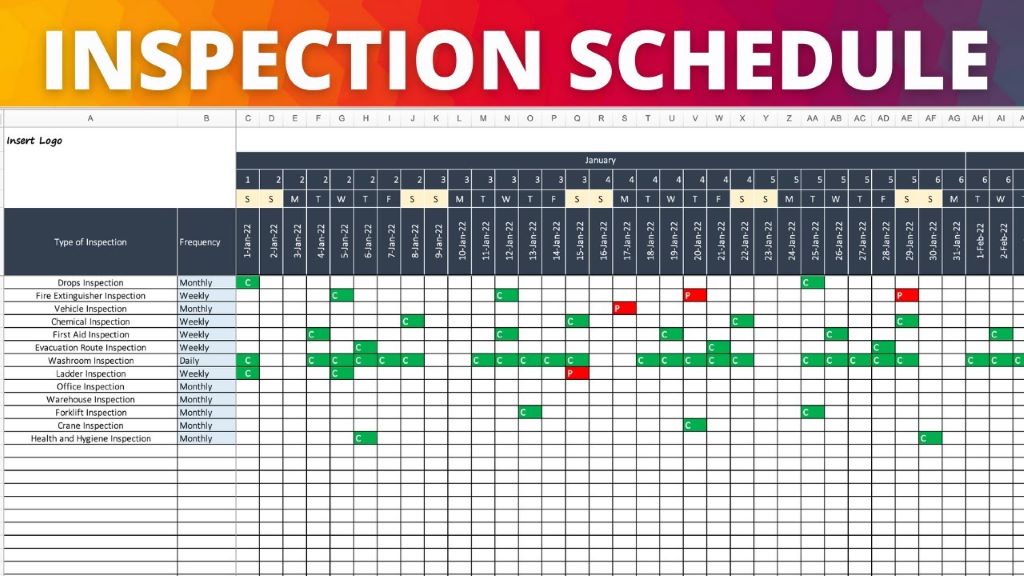Scheduling peace of mind home inspections can bring you invaluable insights into the current condition of your house. By having a trained professional conduct a comprehensive assessment, you’ll uncover issues that need addressing – some minor and others more pressing. This allows you to be proactive with maintenance and repairs, prioritizing what’s most important for your home’s safety and value. But to get the most out of the inspection, you need to prepare properly. When you facilitate complete access and provide key documentation ahead of time, the inspector can conduct thorough checks of all areas and systems. This leads to more precise findings in their report. Preparation also sets the right tone, demonstrating you welcome objective feedback and are committed to proper home maintenance.
Follow this comprehensive guide when getting ready for your upcoming peace of mind inspection. We’ll explore key steps to take before, during, and after the inspector comes through your property. Do these things, and the inspection will uncover crucial insights to inform smart decisions about preserving your most valuable investment – your home.
Schedule the Inspection for an Optimal Time
Carefully consider when you book the inspection, as the date and time impact what the inspector can assess. Weekday mornings are best when ample daylight remains to inspect the exterior and attic spaces. The inspector also won’t feel rushed on a weekday morning, whereas weekend bookings must fit around other appointments.
It’s also wise to check the weather forecast when scheduling, avoiding dates with heavy rain or snow. Since inspectors rely heavily on visual cues, severe weather can impede certain aspects of their analysis. If testing the fireplace or heating system, you’ll also want moderate temperatures for proper operation.
Gather and Organize Relevant Documents
Your inspection will be more productive if the inspector understands your home’s history and past issues. This context helps them interpret their findings and tailor their recommendations. To provide this background, have the following documentation ready:
- Home inspection reports from past sales or refinancings
• Permits for renovations or upgrades
• Warranties and manuals for appliances, fixtures, and systems
• Records of repairs, replacements, and major maintenance
By organizing these documents in advance rather than sifting through piles during the inspection, you respect the inspector’s time. Display this information prominently so they can reference it easily when assessing certain areas of your home.
Conduct a Deep Clean from Top to Bottom
A thorough cleaning before the inspection serves multiple purposes. First, it makes all areas readily accessible rather than obstructed by clutter. When attics, basements, garages, and storage rooms are tidy, the inspector can comfortably access electrical panels, ductwork, and structural components. Debris and excessive storage also disguise leaks, pest damage, mold, and other problems.
Deep cleaning also removes traces of everyday living that distract the inspector from their primary task – evaluating the home’s physical condition. A tidy house with clear surfaces allows them to focus fully on their detailed assessment, from structure to finishes.
As you clean, pay special attention to these areas:
- Kitchen and bathrooms: Clean grime around sinks, showers, and toilets. Remove products from cabinets so the inspector can check pipes and ventilation.
• Bedrooms and living spaces: Clear out piles of laundry, kids toys, exercise gear – anything that prevents floors, walls, and ceilings from being visible.
• Storage areas: Straighten shelves, sweep floors, and eliminate excess items so attics, basements, garages and sheds are easily walkable.
• Outside: Mow lawns, trim vegetation, wash windows, and clear debris around the exterior. The inspector will check the foundation, drainage, roof, and exterior finishes.
Getting your house inspection-ready clean provides firsthand value to you as well. Tackling dust and grime improves everyday living until the repairs arise from inspection findings!
Ensure Complete Accessibility for the Inspector
While cleaning, unlock all doors and access panels the inspector will need to enter. This includes:
- Attic entrance
• Crawl space or basement doors
• Garage door openers and manuals
• Gate or fence latches to access all outdoor areas
• Utility room doors housing electrical panels, HVAC equipment, and water heaters
• Closet doors allowing views of pipes and ventilation
• Kitchen cabinet doors to inspect under the sinks
Also, ensure the inspector can actually access these areas by clearing storage, moving aside holiday décor, and repositioning furniture. Remove vehicles from the garage and items blocking basement stairs, too. Eliminating obstacles enables comprehensive inspection of every room and system.
Have All Utilities Turned On
The inspection process requires power and water access at the property. Ensure all utilities are active ahead of the appointment time. For vacant homes awaiting sale, this may mean contacting providers to schedule temporary service restoration.
If the house has sat vacant for long periods, ignite pilot lights for appliances needing gas connections. These include:
- Furnace
• Water heater
• Gas fireplace logs
• Gas stoves or cooktops
With all utilities energized, the inspector can thoroughly test lighting, electrical outlets, and venting/exhaust systems. Plus, permanent pilot lights must burn for 24 hours to purge gas lines of accumulated air bubbles before adjustments. Having pilots lit in advance prevents delays.
Attend to Minor Maintenance Issues
Before the walkthrough, repair small issues requiring minimal time or cost. Replace spent light bulbs, re-caulk leaky faucets in bathrooms and kitchens, tighten loose doorknobs, and touch up recent scuffs on walls. This prevents the inspector from calling out inconsequential flaws that you could easily fix yourself.
More importantly, being proactive with basic maintenance sets a strong first impression. It signals to the inspector you actively care for your largest investment and prioritize homeowners’ duties. This builds credibility around your commitment to ongoing repairs for bigger inspection findings. It also suggests their forthcoming recommendations align with your overall property stewardship values.
Think Through Questions the Inspector Might Ask
Home inspectors observe intricate details most homeowners overlook daily when simply living in a house. Use the lead time before your inspection appointment to study aspects of your home with fresh eyes.
Consider details like:
- Home’s original construction date and past renovations
• Materials used for the roof, siding, and foundation
• Recall any leaks, electrical issues, or appliance breakdowns
• Documentation for new additions or upgrades
• Warranty specifics for heating/cooling systems or appliances
Jot down notes so this key information is handy when the inspector poses related questions. They rely on accurate insights into the home’s history when assessing current conditions and delving into problems uncovered. If unable to answer their questions, dig up documentation after the inspection to better understand findings that need attention.
Be Present and Engaged Throughout the Inspection
Rather than use the 2-3 hours of peace of mind home inspections to run errands, arrange to be present and accompany the inspector. Your involvement serves multiple benefits:
You Can Ask Questions Along the Way
Observing a professional home inspector opening utility panels, probing foundation cracks, and maneuvering through tight attic spaces intrigues most homeowners. As they use high-tech tools and point out obscure building conditions issues, you’ll naturally have questions pop into mind.
By accompanying the inspector on their route through your home, you can get these questions answered immediately rather than forgetting key details later when reading the report. Stay engaged by asking about what they inspect, how certain materials or systems should perform, the purpose of specialized gear they use, and reasons for testing procedures done.
You’ll Gain Valuable Maintenance Insights
Shadowing a home inspector as issues arise also provides an informal education in home maintenance. Rather than just documenting problems in their report, reputable inspectors share context, informing homeowners about underlying causes and proper repairs.
Listen closely to tips they provide for protecting against water intrusion, extreme weather, pest infestations, and common system failures. Use the inspector’s expertise to bolster your own home maintenance know-how.
You Can Clarify Concerns on the Spot
Even for seasoned homeowners, an inspection may uncover unfamiliar situations that raise questions or confusion. By accompanying the process. You can immediately clarify anything that seems peculiar or concerning.
For example, if pulling back insulation reveals damp boards but no visible leaks above, you might ask, “Should those rafters show moisture like that?” Or seeing corrosion on an electric panel might prompt asking, “Is that amount of rust normal on a panel that age?”
Getting quick answers to questions like these provides peace of mind. It also prevents fretting while awaiting the final report. Speak up when you notice anything different from your understanding of standard building practices.
Take Detailed Notes for Future Use
As inspectors share advice and explain issues noted, jot down specifics in a notebook or dedicated note-taking app on your phone or tablet. When reviewing the detailed inspection report later, these personalized addendums make the findings more actionable.
For example, document if the inspector…
- Suggests getting on a roofing company’s schedule before next winter when their business heats up with storm repairs.
• Warns that overgrown trees observed could eventually damage siding during storms.
• Shares that emerging moisture in one area often means it exists in adjoining areas too.
• Reveals that irregularities in cinder block foundation walls predict eventual cracking and seepage.
Cataloging these candid recommendations and technical insights supplements the core inspection report with a helpful background for your reference. It also saves you from contacting the inspector later to revisit unclear or concerning issues called out.
Ask Questions If Anything Seems Unclear
Peace of mind home inspection reports can make even the savviest homeowners scratch their heads trying to interpret issues uncovered. Complex structural conditions, convoluted plumbing leaks, and multi-faceted electrical problems often confuse more than clarify.
Rather than fake comprehension during the inspection as unusual findings emerge, ask for simple explanations about aspects that seem fuzzy or questionable. The inspector should readily educate you on technical matters tied to their observations.
Common areas where additional Q&A helps include:
- Terminology for structural materials and mechanical systems
• Defining types/causes of water damage based on visual patterns
• Distinguishing between cosmetic flaws and functional defects
• Clarifying when issues likely arose based on material aging and degradation
Think of inspectors as translators interpreting issues in your home’s physical language. Query them to decode any translation gaps muddying your understanding. This prevents mistaken assumptions when evaluating their findings later.
Remain Open-Minded About Both Praise and Criticism
A natural tendency when another person evaluates something meaningful is taking critique personally while embracing praise. Yet, for inspection findings to be useful, you must welcome objective assessments from these impartial subject matter experts. Rather than an appraisal of your homeowner competency, inspections provide candid perspectives no seller or real estate agent offers.
The most thorough inspectors balance highlighting assets with issuing fair criticism. All homes, even newly constructed ones, have flaws. Unless built and maintained perfectly across decades (an impossible feat!), your house will have some proportion of problems. How you respond to less-than-glowing inspection reviews demonstrates your priorities in protecting your property.
Here is the right mindset during the inspection:
Expect a balanced mix of favorable and critical observations. A completely glowing report indicates potential inspection shallowness. But exclusively dire findings suggest a predisposition to overstating minor issues.
Separate yourself emotionally when the inspector calls out problems. These reflect the home’s condition, not your merits as a homeowner.
Appreciate identifying issues otherwise hidden until discovered at the worst times. Now, you can address them proactively.
Prioritize what matters most – your family’s safety and your house as a functional shelter. Cosmetic or non-essential defects matter far less.
Focus less on past oversight and more on preventing future headaches. Use findings to inform ongoing maintenance plans.
Ask the Inspector About Any Specific Concerns Upfront
Most inspectors encourage homeowners to voice unique areas of concern before the peace of mind home inspections start. This allows them to hone their examination through the personalized lens of what matters most to you.
For example, share if you have…
- Recently noticed bowing walls or cracks in the concrete slab floor.
• New staining on ceilings below bathrooms or kitchen fixtures.
• Concerns about aging roof integrity through extreme weather.
• Shifting or settling you’ve observed around exterior steps and patios.
Communicating known issues upfront ensures the inspector looks closely for associated signs of further trouble. Their technical expertise also brings helpful context on causes and solutions to monitor areas that already have you worried.
Additionally, inspectors can target areas where future plans warrant extra scrutiny. Be transparent if you hope to finish a basement, add a major addition, or do extensive landscaping that changes drainage. Design aspects that bear on intended remodeling represent wise uses of an inspector’s diagnostic skills while onsite.
Carefully Review the Entire Inspection Report
After submitting a typically lengthy written report (often accompanied by abundant photographs), the inspector will also offer a debriefing call. Here, they review the main findings that require prompt attention. But don’t let the overview discussion suffice – be sure to diligently read your report in its entirety.
Why such emphasis on carefully reviewing the document? Reports contain Insights informing decisions at multiple levels:
- Prioritizing critical repairs before listing a home for sale based on risks posed
• Budgeting shorter-term maintenance needs balancing cost, disruption, benefits
• Diagnosing early signs of deterioration warranting ongoing monitoring
• Confirming assumptions about previous owner neglect or prudent stewardship
• Identifying upcoming replacement requirements as building systems age
Look beyond just the enumerated issues checklist, too. The inspector’s overall observations characterize how the home has been cared for and potential areas of vulnerability. Their professional opinions guide appropriate next steps in responding to discoveries made.
Note especially the report’s safety warnings. Your family’s well-being, not the house itself, represents the most precious thing a peace of mind inspection protects through issues uncovered. Carefully heeding these warnings deserves utmost priority when planning corrective actions.
Get Multiple Quotes to Gauge Reasonable Repair Costs
Once processed, the next step is getting contractor price quotes to fix deficiencies noted in the inspection report. But don’t take just one company’s word on cost estimates for major issues identified. The variance between quotes on projects like roof replacements, driveway re-pours, HVAC equipment swaps, and drainage system overhauls often surprises homeowners awaiting the inspection aftermath.
By requesting at least three bids, you can gauge price differences based on:
- Materials used: Low to premium options balance durability and aesthetics differently. Know these tradeoffs when evaluating quotes.
- Ways the project gets specified: Contractors often swap preferable approaches to cut quoted costs. Get transparent bids.
- Installation methods that impact quality and longevity. Press for details to avoid unpleasant surprises from “cheapest” contractors.
- Contractor qualifications, guarantees provided, site cleanliness, project duration. Cheaper labor often corresponds to bigger hassles.
Yes, accommodating multiple site visits and quote analyses takes significant effort. But the payoff comes from selecting repairs and replacements executed dependably and economically to properly address inspection findings. Doing your due diligence squeezes out more long run value from big ticket home investments.
Make Fixes Started Sooner Rather Than Later
Procrastination typically heightens the costs and headaches arising from inspection report issues. Small problems turn bigger when left unchecked:
- Moisture infiltration through cracked caulk expands into water intrusion eroding building materials
• A ductwork detached in the attic leads to HVAC airflow reductions and skyrocketing energy bills
• Leaky plumbing pipes worsen until a pipe suddenly bursts, causing structural damage
Build momentum by promptly addressing the inspection report’s clearest and most urgent fixes identified:
• Safety issues pose immediate risk like exposed electrical, dangerous stairs, or carbon monoxide leaks
• Operational problems make the home unlivable like sewer line blockages
• Damage causing asset destruction such as pest infestations, detached gutters, and roof leaks
Tackling easier fixes provides motivation and learnings how to best stage larger discovered issues needing coordinated work. Surgical repairs also prevent problems worsening before comprehensive overhauls done later.
Keep Detailed Maintenance Records
The full value of a meticulous inspection emerges through purposeful upkeep and readiness to reference the report when future problems arise. Store written reports and photographs for permanent reference across years of homeownership. Back up digital versions too for quick retrieval without paperwork hunting.
Alongside inspector findings, create home maintenance files storing:
- Repair estimates for comparison across service calls
• Receipts and warranties for heating/cooling units and appliances
• Upgrade details like new roof specifications and materials
• Manufacturer reference manuals for household systems
Well organized home maintenance records demonstrate attention to stewarding your property for safe, reliable, cost-efficient operations. These documents also speed addressing issues when reactive repairs become necessary. With full histories available, you nip problems faster and smarter.
Pre-Inspection Prep Sets the Stage for Success
Dedicate proper planning and elbow grease before the inspector’s scheduled walk through. Clean thoroughly, organize maintenance documents, ensure complete access, and remedy nominal issues ahead of time. Prepare to accompany their process with an open and inquisitive mindset. Jot down questions and take notes for future reference.
These proactive measures ensure your peace of mind. Home inspection uncovers meaningful insights to guide the ongoing enjoyment of your property for years to come. Anticipating the inspector’s needs positions you to absorb and respond to helpful information this objective third party provides. Heeding uncovered issues also helps protect your home’s condition and market value.
The peace gained from facing the inspection’s sobering realities head-on liberates you to make well-informed decisions, benefiting your household’s safety and your house as a functional asset. Rather than just checking a box to satisfy a buyer, seller or lender, use the experience to elevate how you care for and improve one of life’s most precious commodities – your home.
FAQs
- Should I follow behind the inspector during their assessment?
It’s best not to shadow the inspector as they work closely. Allow them ample space to maneuver tools and testing equipment without risk of injury to anyone. However, do remain available to answer questions, provide context, and get clarification if anything seems confusing or concerning in the moment.
- What if the utilities aren’t currently turned on in my vacant home?
Contact utility providers to arrange temporary service restoration if gas, electric, or water are shut off. This ensures inspectors can thoroughly test appliances, electrical systems, ventilation, and plumbing fixtures essential to evaluating your home’s condition.
- Do I need to empty all drawers, shelves, and closets before the inspection?
While empty spaces simplify the inspection, clearing out entire contents usually isn’t necessary. Use best judgment removing belongings that may obstruct views or access. But home furnishings and stored items can typically stay put without hindering a thorough assessment. Just ensure stored goods are orderly and don’t pose falling/tripping hazards.
- What if I can’t fix a minor issue before the inspector arrives?
Don’t stress about leaving a small leak, sticking door, or burnt out light for the inspection. Just point these out to the inspector and share plans to address them promptly. This demonstrates awareness and accountability. Know that reputable inspectors focus on material defects, not inconsequential hassles that homeowners easily resolve.
- Can I invite my real estate agent to attend the inspection?
Agents often provide valuable perspectives informing next steps after the inspection. But direct involvement during the inspection itself can distract the process. Limit attendance to essential parties only – you, family members, inspectors, and serious buyers if selling. But do share findings with your agent later when developing action plans.
Last Words
Regardless of whether you’re selling or staying, inspection findings should guide better homeownership decisions long after the inspector’s appointment concludes. Repairing issues, upgrading neglected maintenance, and listening to candid evaluator feedback all position your house to deliver security, comfort and strong value for years ahead. See the peace of mind home inspections as the first step toward responsible planning and protection against unexpected problems down the road.
When undertaking the transformation of replacing a window with a wall, it is essential to stay organized with detailed recordkeeping of repairs made stemming from inspection revelations, ensuring a seamless process. Additionally, continue tuning in to emerging issues early rather than allowing them to expand into costly repairs later, and revisit the original report periodically as a guide for diagnostic spot inspections to uncover early signs of new trouble areas. Use what you learn from the inspection experience to keep the momentum going in caring for your home attentively, frequently and thoroughly. Establish preventative maintenance habits aligned with inspector recommendations so your house continues providing peaceful shelter for you and your family.








